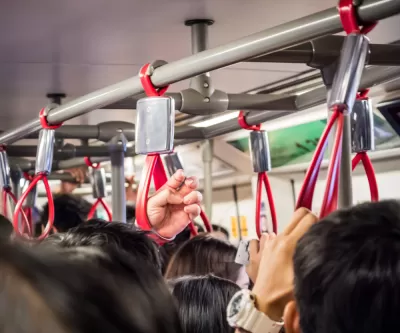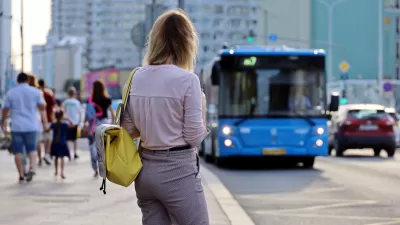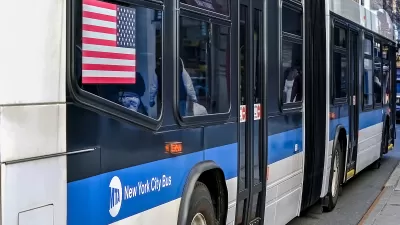Fare-free programs that apply to buses and not trains create a fragmented transit system and encourage more people to use slower, less efficient modes.

The idea of fare-free transit is nothing new, and has been gaining more traction in cities around the country in the last few years. However, Jarrett Walker, writing in Bloomberg CityLab, calls attention to what Walker believes could be a troubling trend: making fare free on buses, but not trains. “If that trend spreads, we should expect some bad consequences,” Walker writes.
As Walker explains, Washington, D.C. and Boston are both exploring free bus transit, but have kept fares on their train systems. According to Walker, “A certain kind of capitalist would say this is fine: The train is faster, so it should cost more. But when people use a slower service rather than a faster one, it’s not just bad for them. It’s also bad for the transit agency budget, which means it’s bad for everyone who uses transit or benefits from it.”
Buses, which are smaller, will reach capacity more quickly. “Trains, on the other hand, are much more likely to have surplus capacity, especially now that so many suburban commuters who used to pack them are working from home, so they could be serving many of the same people at lower cost.”
At the same time, the distinction between buses and rails also raises questions about who each mode serves. Additionally, many trips require combining both bus and train, and lower-income riders are more likely to have more dispersed travel patterns that are often better served by buses. For these and other reasons, Walker argues, the free fare debate should take place around the whole transit network. “An efficient and therefore liberating urban transit network encourages people to think about the total network, and to use buses or trains according to which is better for each part of their trip.”
FULL STORY: When Buses Are Free But Trains Aren’t

Alabama: Trump Terminates Settlements for Black Communities Harmed By Raw Sewage
Trump deemed the landmark civil rights agreement “illegal DEI and environmental justice policy.”

Planetizen Federal Action Tracker
A weekly monitor of how Trump’s orders and actions are impacting planners and planning in America.

The 120 Year Old Tiny Home Villages That Sheltered San Francisco’s Earthquake Refugees
More than a century ago, San Francisco mobilized to house thousands of residents displaced by the 1906 earthquake. Could their strategy offer a model for the present?

In Both Crashes and Crime, Public Transportation is Far Safer than Driving
Contrary to popular assumptions, public transportation has far lower crash and crime rates than automobile travel. For safer communities, improve and encourage transit travel.

Report: Zoning Reforms Should Complement Nashville’s Ambitious Transit Plan
Without reform, restrictive zoning codes will limit the impact of the city’s planned transit expansion and could exclude some of the residents who depend on transit the most.

Judge Orders Release of Frozen IRA, IIJA Funding
The decision is a victory for environmental groups who charged that freezing funds for critical infrastructure and disaster response programs caused “real and irreparable harm” to communities.
Urban Design for Planners 1: Software Tools
This six-course series explores essential urban design concepts using open source software and equips planners with the tools they need to participate fully in the urban design process.
Planning for Universal Design
Learn the tools for implementing Universal Design in planning regulations.
Clanton & Associates, Inc.
Jessamine County Fiscal Court
Institute for Housing and Urban Development Studies (IHS)
City of Grandview
Harvard GSD Executive Education
Toledo-Lucas County Plan Commissions
Salt Lake City
NYU Wagner Graduate School of Public Service





























